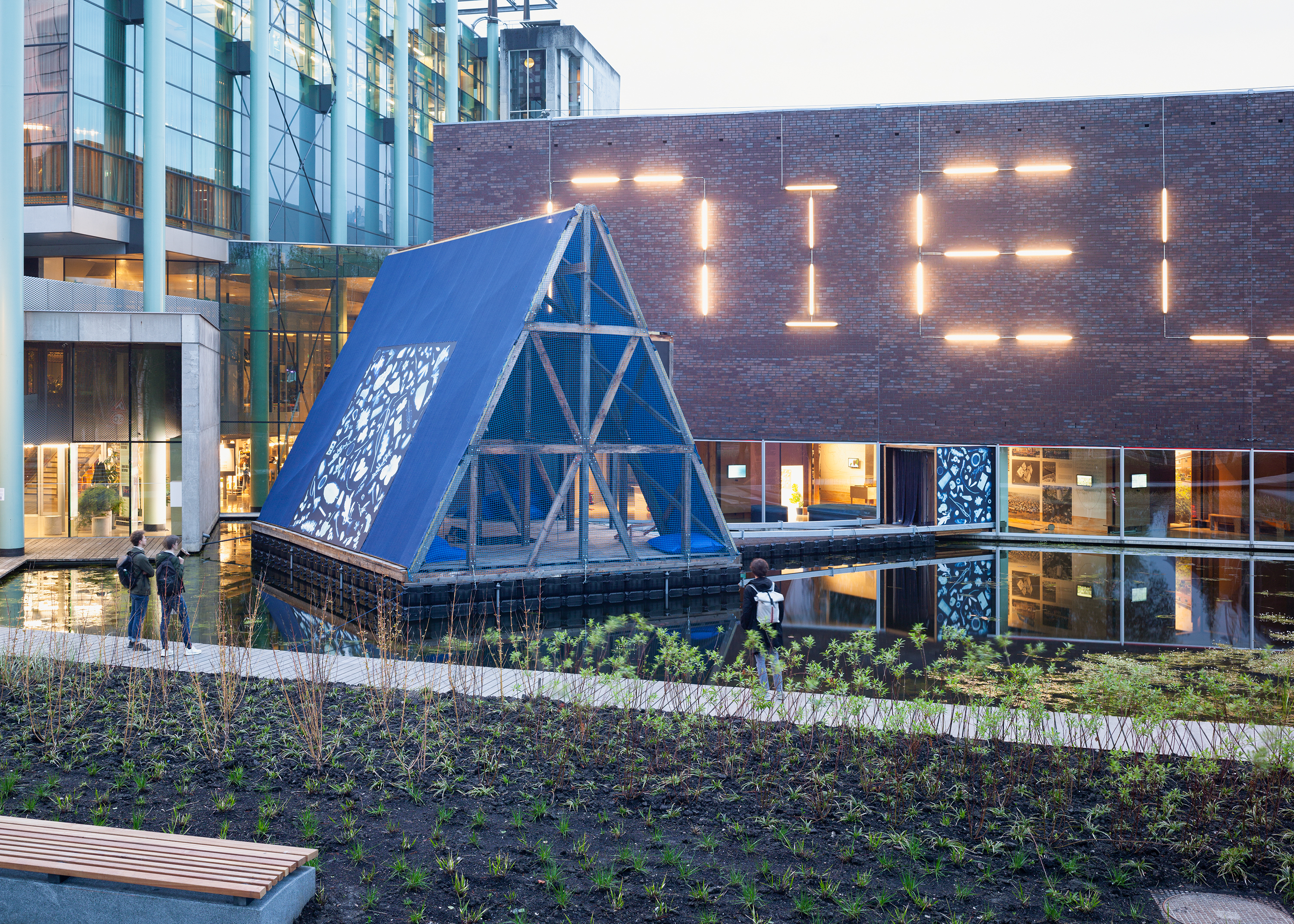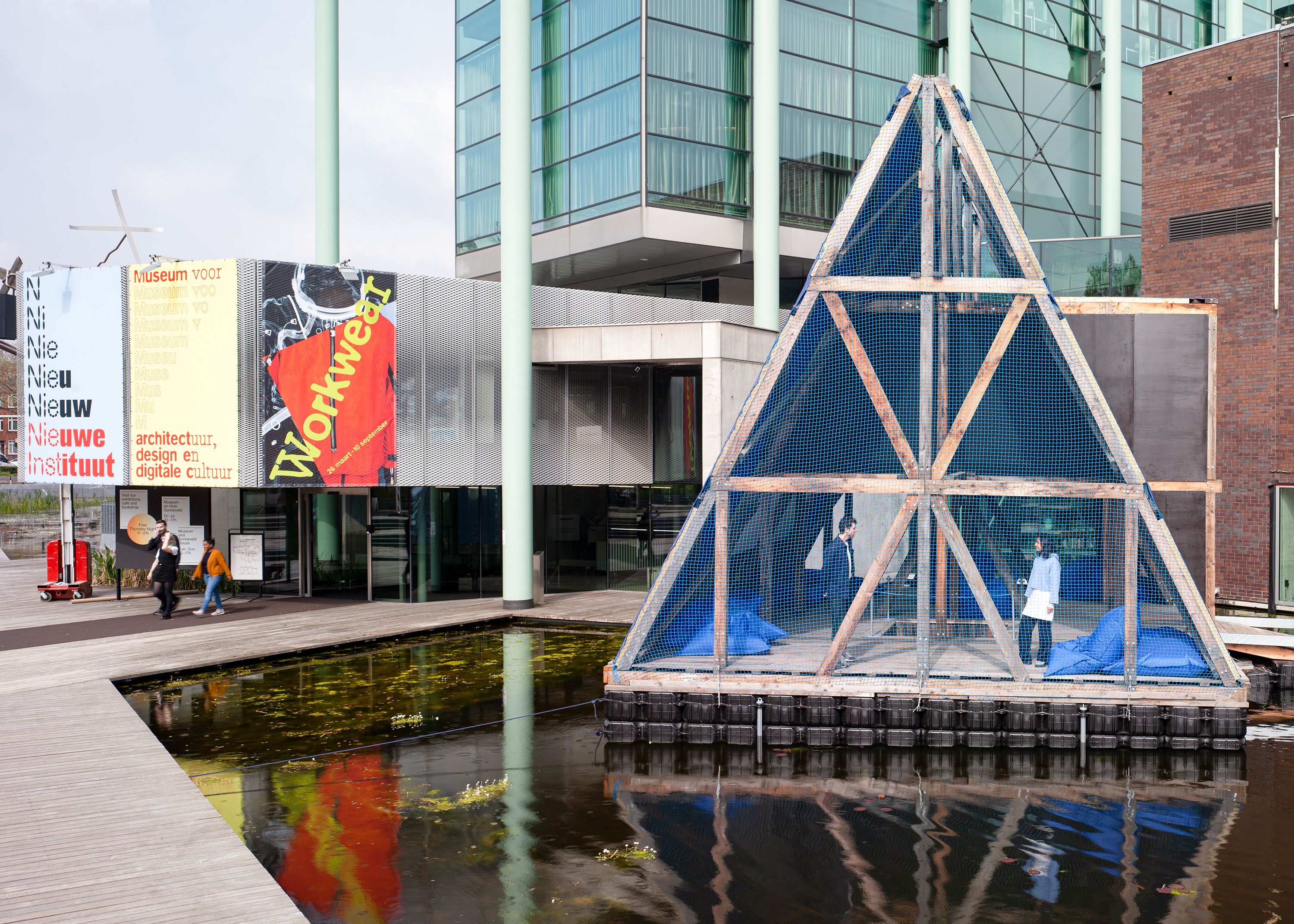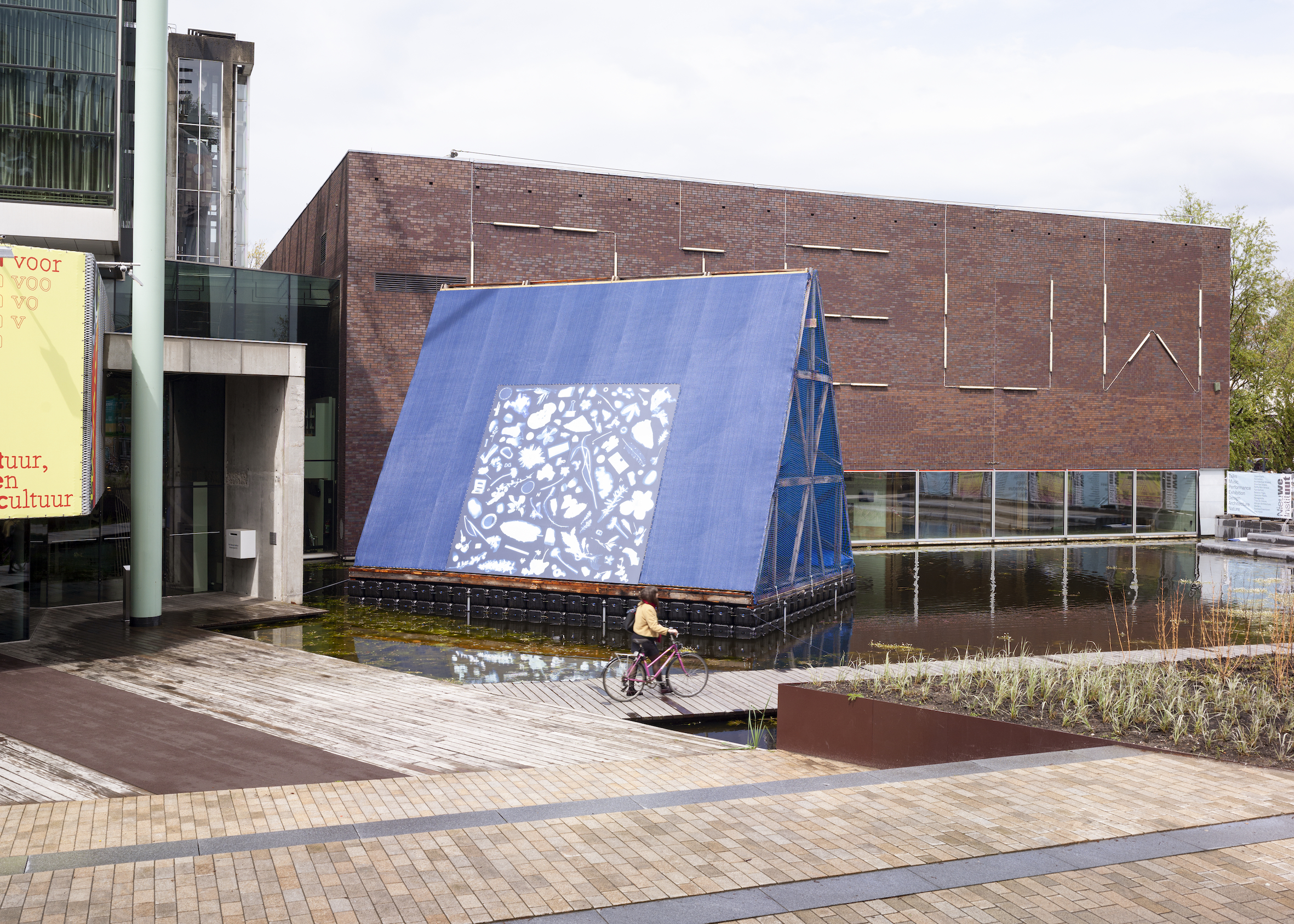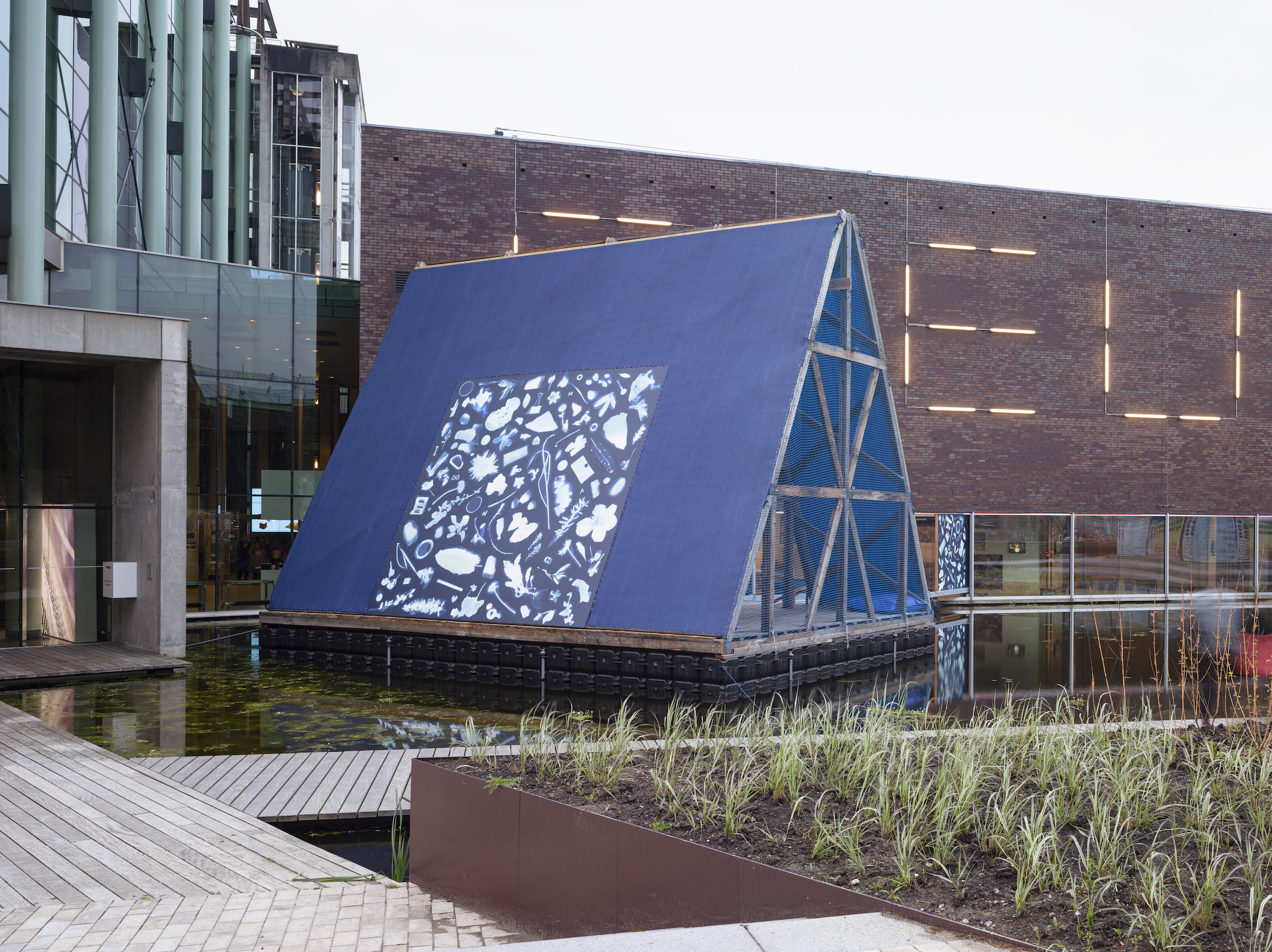
Kunlé Adeyemi’s fascination with water cities goes back years. The Amsterdam-based Nigerian architect conceived his now-famous Makoko Floating School in Lagos, Nigeria, in 2011, and similar ideas have been in development throughout his career as an architect. Now, his research and concepts around floating structures and living on water are coming to Rotterdam, as Het Nieuwe Instituut has just launched its annual installation under the leadership of its creative and artistic director Arik Chen – welcome to ‘Water Cities Rotterdam. By Kunlé Adeyemi’.

Water cities and alternative urban futures
Adeyemi's ideas about alternative urban futures, city growth and different ways of living can be found as early as an essay he published in 2007 in the journal Log, entitled 'Urban Crawl'. Makoko Floating School followed, its construction completed in 2012. More floating models after that included one at the Venice Architecture Biennale in 2016, one in Bruges, and one in Chengdu, both in 2018. Adeyemi’s Floating Music Hub in Cape Verde won Best Music Venue at the 2021 Wallpaper* Design Awards, and opened to the public the same year.
All the projects used the architect's Makoko Floating System (MFS), a prefabricated, modular, A-frame, sustainable timber structure that offers alternatives for living on water – something, Adeyemi points out, many cultures already do, in many parts of the world.
'Every time I do an incarnation of it, the thinking evolves,' Adeyemi says. 'I am always developing it and trying to understand its challenges and functions, developing new solutions and technologies on how to live and build on water. This is just one of many building typologies that are part of the ecosystem of what we call water cities – in Africa, but also as a wider concept around the world.'

‘Water Cities Rotterdam. By Kunlé Adeyemi’
For 'Water Cities Rotterdam. By Kunlé Adeyemi', Chen invited the architect to take charge of the Het Nieuwe Instituut's annual summer installation. They discussed it and decided to offer the public a chance to experience his proposals and floating models – building one on the pond outside the institute, which the public can board and visit.
The structure used is in fact the 2016 Venice one, adding an element of sustainable architecture and circularity to the project. 'I realised that I had the original Venice installation in storage, so we upcycled that for this installation. We tweaked it a little, as it was too tall, but it's the same one,' Adeyemi says.
The evolution here is that the architect worked with specialists on marine life, and added underwater cameras to observe how the wildlife behaves around the structure. 'We wanted to use it to observe underwater life through the project, to see the impact. We haven't done this intentionally before, although we have examined things casually in the past. Now we are installing cameras and observing and reversing the gaze, to see what it looks like and see what the underwater life sees. There will also be a projection, where visitors can adopt the same view,' the architect explains.

Adeyemi hopes that through this creative display, awareness will be raised and people will feel more open to exploring living alongside water. 'I think it’s not only a valid path to take [to expand cities on the water] but it is also an inevitable [one],' he stresses. 'It will suddenly be the only way, because of sea level rises and the increase in water flooding all around the world. It’s alarming and cities and communities have to adapt. You either retreat from water, and try to fight it, [or] another way is to learn to live with it. Many communities have done it around the world in the past already –especially in Asia and Africa.'
African Water Cities, a book expanding on these themes, will be released in June 2023, while the display at Het Nieuwe Instituut will include collaborations with artist Thijs de Zeeuw and graphic artists Opperclaes.







